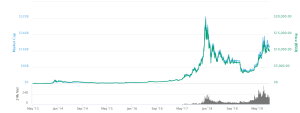Bitcoin Price Today: Understanding the Factors Behind its Fluctuations
Uncover the forces shaping Bitcoin’s price today. From macroeconomic trends to breaking news, we decode the volatility and help you understand the market shifts. Get the insights you need!
The price of Bitcoin‚ like any volatile asset‚ experiences constant fluctuations. Understanding these movements requires analyzing a complex interplay of factors. Today’s price action is rarely isolated; it’s often a continuation of trends established over days‚ weeks‚ or even months. Let’s delve into the potential reasons behind Bitcoin’s performance today‚ examining both macroeconomic influences and specific events affecting the cryptocurrency market.
Macroeconomic Factors Influencing Bitcoin’s Price
Bitcoin’s price is inextricably linked to global macroeconomic conditions. Interest rate hikes by central banks‚ inflation rates‚ and overall economic uncertainty all play a significant role. For example‚ periods of high inflation can drive investors towards alternative assets like Bitcoin‚ perceived as a hedge against inflation. Conversely‚ rising interest rates can make holding Bitcoin less attractive‚ as investors may seek higher returns in traditional markets. This dynamic relationship requires careful consideration when assessing Bitcoin’s daily movements.
Geopolitical events also exert considerable influence. International tensions‚ political instability‚ and major global conflicts can create uncertainty‚ leading to increased demand for safe-haven assets‚ including Bitcoin. This is because Bitcoin is decentralized and operates independently of any single government or institution‚ making it a potentially attractive investment during times of turmoil. The perceived safety and security of Bitcoin becomes even more pronounced during times of international strife.
Inflation and its Impact on Bitcoin
Inflation‚ the persistent increase in the general price level of goods and services in an economy‚ often prompts investors to seek assets that retain their value or appreciate despite inflation. Bitcoin‚ with its fixed supply of 21 million coins‚ is often viewed as a deflationary asset‚ potentially offering protection against inflationary pressures. This perception can drive demand‚ leading to price increases.
However‚ the relationship between inflation and Bitcoin’s price isn’t always straightforward. Other factors‚ such as regulatory changes or technological advancements‚ can significantly influence Bitcoin’s price‚ sometimes overriding the impact of inflation. Therefore‚ while inflation can be a contributing factor‚ it’s crucial to consider the broader market context.
Regulatory Landscape and its Influence
Government regulations and policy decisions concerning cryptocurrencies significantly impact Bitcoin’s price. Positive regulatory developments‚ such as the clear establishment of legal frameworks for cryptocurrency trading and investment‚ can boost investor confidence and lead to price increases. Conversely‚ stricter regulations or outright bans can trigger sell-offs and price declines. The regulatory landscape is constantly evolving‚ making it a dynamic factor in Bitcoin’s daily performance.
Different countries adopt diverse approaches to regulating cryptocurrencies. Some countries embrace Bitcoin and other cryptocurrencies‚ while others remain cautious or even outright hostile. This variation in regulatory approaches can lead to significant price fluctuations as capital flows between jurisdictions with differing regulatory environments. The regulatory uncertainty inherent in the cryptocurrency market contributes to its inherent volatility.
Impact of Specific Regulatory Announcements
Specific announcements from regulatory bodies can have an immediate and substantial impact on Bitcoin’s price. A positive statement from a major regulatory authority can trigger a rapid price surge‚ while negative news can lead to a sharp decline. The speed and magnitude of these reactions highlight the sensitivity of the cryptocurrency market to regulatory developments. It’s crucial for investors to stay informed about regulatory developments to better understand Bitcoin’s price movements.
Technological Advancements and Bitcoin’s Price
Technological advancements within the Bitcoin network itself can also influence its price. Upgrades to the network’s infrastructure‚ the implementation of new features‚ or the development of innovative applications built on top of the Bitcoin blockchain can all impact investor sentiment and‚ consequently‚ the price. These advancements often signal a maturing and evolving ecosystem‚ which can attract new investors and boost demand.
Conversely‚ significant technological challenges or vulnerabilities discovered within the Bitcoin network can lead to price drops‚ as investors may become concerned about the security or stability of the system. Therefore‚ continuous monitoring of technological developments within the Bitcoin ecosystem is essential for understanding price fluctuations.
Scalability Solutions and their Influence
One significant area of technological advancement is the ongoing effort to improve Bitcoin’s scalability. Scalability refers to the network’s ability to handle a large number of transactions efficiently. Solutions like the Lightning Network aim to address this challenge by enabling faster and cheaper transactions off the main blockchain; Successful implementation and adoption of such solutions can positively impact Bitcoin’s price by enhancing its utility and adoption rate.
Market Sentiment and Investor Behavior
Market sentiment‚ which reflects the overall mood and expectations of investors‚ plays a crucial role in shaping Bitcoin’s price. Periods of strong bullish sentiment‚ characterized by optimism and expectations of future price increases‚ can drive demand and push prices higher. Conversely‚ bearish sentiment‚ characterized by pessimism and fear of price declines‚ can lead to sell-offs and price drops. This psychological aspect of the market is a significant driver of price volatility.
Investor behavior is also influenced by various news events‚ social media trends‚ and the actions of prominent investors or influencers. FOMO (fear of missing out) and FUD (fear‚ uncertainty‚ and doubt) are common psychological factors that can significantly impact investor decisions and contribute to price fluctuations. Understanding these psychological drivers is crucial to navigating the volatile nature of the Bitcoin market.
- FOMO (Fear of Missing Out): This often leads to impulsive buying decisions‚ pushing prices up.
- FUD (Fear‚ Uncertainty‚ and Doubt): This can trigger panic selling‚ causing prices to plummet.
- Whale Activity: Large investors can significantly influence prices with their buying or selling activity.
Other Factors Affecting Bitcoin’s Daily Performance
Beyond the major factors already discussed‚ several other elements can contribute to Bitcoin’s daily price movements. These include news related to specific companies adopting Bitcoin‚ the emergence of new cryptocurrencies‚ changes in mining difficulty‚ and even seasonal effects. It is imperative to consider the interplay of all these factors to gain a comprehensive understanding of Bitcoin’s price action.
The interconnectedness of these factors means that predicting Bitcoin’s daily price with certainty is practically impossible. However‚ by carefully monitoring and analyzing the information available‚ investors can develop a better understanding of the forces shaping Bitcoin’s value and make more informed decisions.
- Adoption by Businesses: Increased adoption by companies can boost investor confidence.
- New Cryptocurrency Launches: Competition from new cryptocurrencies can affect Bitcoin’s market share.
- Mining Difficulty: Changes in mining difficulty can impact the rate of Bitcoin creation.







